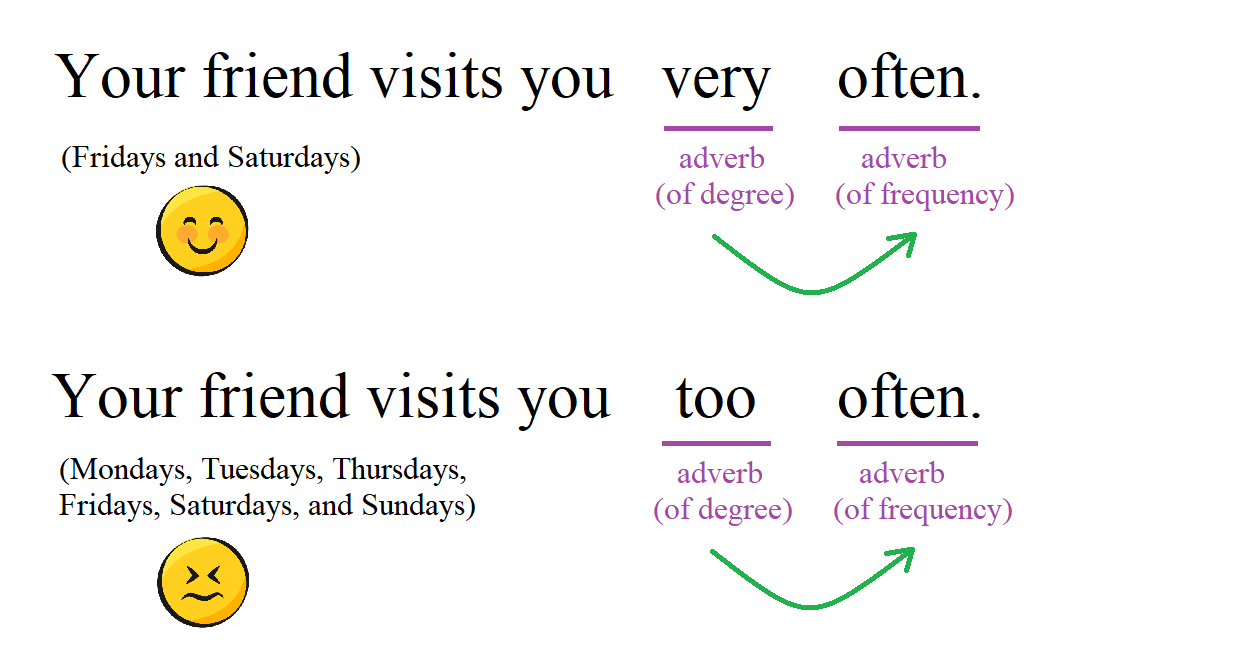Adverb that Modifies Another Adverb
- Adverb can modify another adverb.
- Typically, the adverb modifying another adverb comes before it.
- Examples of an adverb modifying an adverb are "very quickly" and "too often".
An adverb can modify another adverb. Let's see how it's done.
Placement of Adverb Modifying Adverb
Let's say you have an adverb. If you want to modify it, place a second adverb before it.
Example: "She sings very beautifully." - "very" modifies "beautifully".

Examples:
-
He runs very quickly.
"very" (adverb of degree) modifies "quickly" (adverb of manner)
-
I work really hard every day.
"really" (adverb of degree) modifies "hard" (adverb of manner)
As you can see, we often use Adverb 1 (adverb of degree) to modify Adverb 2 (adverb of manner / adverb of frequency, etc). Just remember Adverb 1 - Adverb 2 pattern.

Examples:
-
Your friend visits you very often.
"very" (adverb of degree) - "often" (adverb of frequency)
-
Your friend visits you too often.
"too" (adverb of degree) - "often" (adverb of frequency)
Practice this topic with the AI English Tutor
AI English Tutor will teach you the grammar and practice it with you in a conversation format. Plus, 100+ practice questions on this topic to cement your understanding.
Try ALULA for free on your phone or tablet








Do you have any questions about this lesson? Ask in the comment section, below.